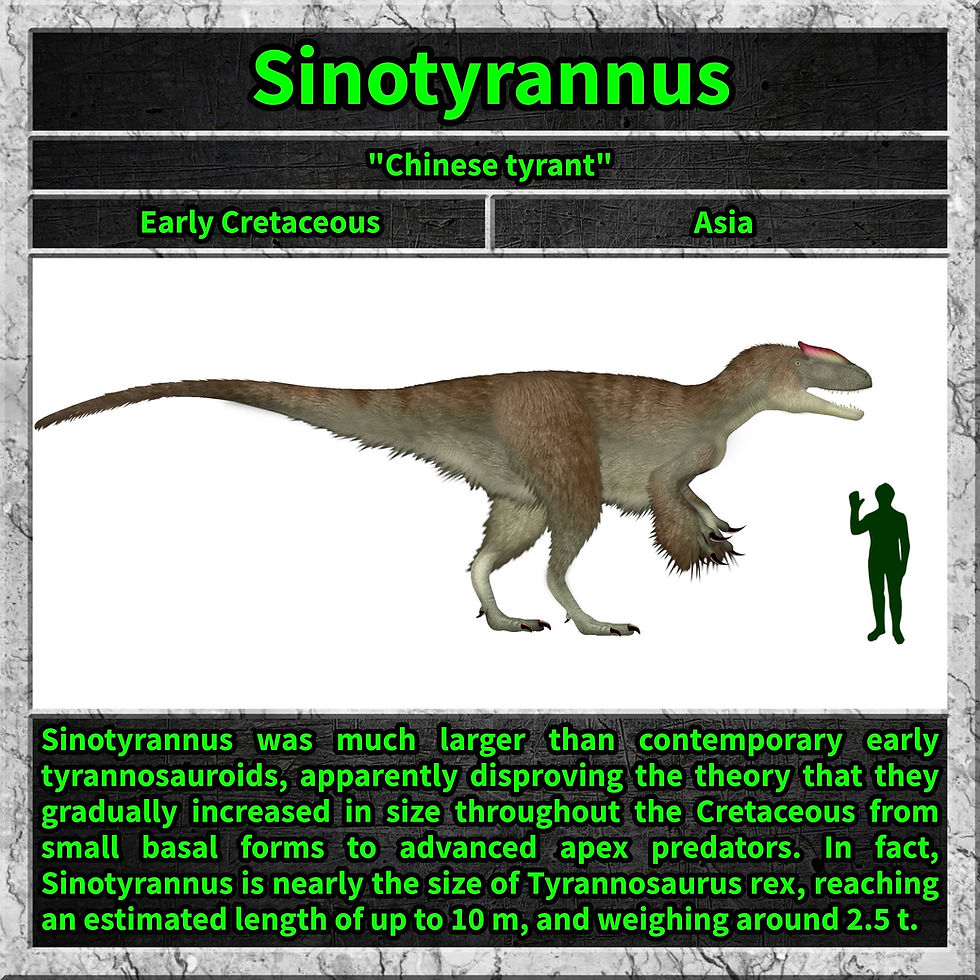MEANING: Chinese tyrant
PERIOD: Early Cretaceous
CONTINENT: Asia
Sinotyrannus was much larger than contemporary early tyrannosauroids, apparently disproving the theory that they gradually increased in size throughout the Cretaceous from small basal forms to advanced apex predators. In fact, Sinotyrannus is nearly the size of Tyrannosaurus rex, reaching an estimated length of up to 10 m, and weighing around 2.5 t.

Sinotyrannus is from the Cretaceous. The Cretaceous is a geological period that lasted from about 145 to 66 million years ago. It is the third and final period of the Mesozoic Era, as well as the longest. At around 79 million years, it is the longest geological period of the entire Phanerozoic. The name is derived from the Latin creta, "chalk", which is abundant in the latter half of the period.
The Cretaceous was a period with a relatively warm climate, resulting in high eustatic sea levels that created numerous shallow inland seas. These oceans and seas were populated with now-extinct flora and fauna, while dinosaurs continued to dominate on land. The world was ice free, and forests extended to the poles. During this time, new groups of mammals and birds appeared. During the Early Cretaceous, flowering plants appeared and began to rapidly diversify, becoming the dominant group of plants across the Earth by the end of the Cretaceous, coincident with the decline and extinction of previously widespread gymnosperm groups.
The Cretaceous (along with the Mesozoic) ended with the Cretaceous–Paleogene extinction event, a large mass extinction in which many groups, including non-avian dinosaurs, pterosaurs, and large marine reptiles, died out. The end of the Cretaceous is defined by the abrupt Cretaceous–Paleogene boundary (K–Pg boundary), a geologic signature associated with the mass extinction that lies between the Mesozoic and Cenozoic Eras.
Sinotyrannus is a proceratosaurid. Proceratosauridae is a family of theropod dinosaurs from the Late Jurassic to Early Cretaceous. They are closely related to the later tyrannosaurids, but typically smaller. They were large bipedal predators with long three-fingered arms, and often had large crests on their snouts. Some proceratosaurids are known to have been covered in feathers.

